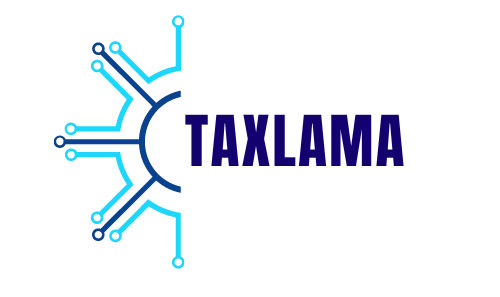In the ever-evolving field of medicine, the foundation of a healthcare professional’s knowledge begins with comprehensive textbooks. These resources provide the essential information needed to understand complex subjects, laying the groundwork for successful careers in various medical fields. Whether you’re a medical student, a nurse, or a practicing physician, textbooks remain invaluable tools for both learning and reference. This article will explore the importance of comprehensive textbooks in medical education, focusing on their role in shaping the knowledge and skills of future healthcare professionals.
The Foundation of Medical Knowledge
Textbooks are often the first point of contact for students entering the field of medicine. They introduce key concepts, theories, and practical knowledge that are necessary for understanding the human body and its functions. Unlike other fields where learning might be more experiential, medicine requires a strong theoretical foundation, which is where textbooks come in.
\Read resource: The future of book publishing trends to watch in 2024
For instance, a subject like anatomy is incredibly detailed and requires precise knowledge of the human body’s structure. Without a textbook, students would struggle to visualize and understand the relationships between different organs, muscles, and systems. Textbooks like Anatomy & Physiology: The Unity of Form and Function by Kenneth Saladin provide students with a detailed, organized, and easy-to-understand framework for mastering these concepts. These books are structured to build knowledge progressively, starting from basic concepts and moving towards more complex ideas.
The Role of Textbooks in Deepening Understanding
Beyond the basics, textbooks also play a critical role in helping students deepen their understanding of medical subjects. As students progress in their studies, they need to move beyond memorization to develop a more profound understanding of how different systems in the body interact and what happens when things go wrong.
Comprehensive textbooks cover a wide range of topics in detail, providing not just the “what” but also the “why” behind medical phenomena. For example, in physiology, understanding how organs work in isolation is not enough; students must also understand how they function together as part of larger systems. This integrated approach is crucial for diagnosing and treating diseases, as well as for conducting research that can lead to new treatments and therapies.
A resource like the Kenneth Saladin Anatomy & Physiology: The Unity of Form and Function 9th edition pdf is especially valuable because it emphasizes the connection between structure and function. By linking anatomy and physiology, this textbook helps students see the bigger picture of how the body operates as a unified whole, which is essential for effective medical practice.
Supporting Practical Skills and Clinical Reasoning
Textbooks are not just about theory; they also support the development of practical skills and clinical reasoning. In medical education, it’s not enough to know the facts—you must also be able to apply them in real-world scenarios. This is where textbooks that include case studies, practical examples, and clinical applications become particularly useful.
For example, understanding the anatomy of the cardiovascular system is one thing, but being able to apply that knowledge to diagnose and treat heart conditions is another. Textbooks that integrate clinical scenarios help bridge the gap between theoretical knowledge and practical application. They provide students with the context needed to understand how what they’re learning will be used in their future careers.
The Kenneth Saladin Anatomy & Physiology: The Unity of Form and Function 9th edition pdf includes various features designed to enhance clinical reasoning, such as case studies and real-life applications. These elements help students see how the concepts they’re learning apply to patient care, making the transition from student to healthcare professional smoother and more effective.
Lifelong Learning and Continuing Education
Medicine is a field that requires continuous learning. As new research emerges and technologies advance, healthcare professionals must stay up-to-date to provide the best possible care. Textbooks remain an essential resource for lifelong learning, offering a reliable reference that professionals can return to throughout their careers.
Even for experienced practitioners, revisiting foundational knowledge is often necessary, especially when dealing with complex cases or new challenges. Comprehensive textbooks provide a solid reference point, ensuring that professionals can continue to learn and grow in their field.
For instance, the Kenneth Saladin Anatomy & Physiology: The Unity of Form and Function 9th edition pdf is not just for students; it’s a resource that can be used by professionals to refresh their knowledge and stay current with the latest advancements in the field. Its detailed explanations and integrated approach make it a valuable tool for ongoing education.
The Digital Transformation of Textbooks
In recent years, the digital transformation of textbooks has made them even more accessible and versatile. Digital textbooks, such as the Kenneth Saladin Anatomy & Physiology: The Unity of Form and Function 9th edition pdf, offer the same comprehensive content as traditional textbooks but with added benefits like portability, search functionality, and interactive features.
These digital versions allow students and professionals to access important information on the go, making it easier to study or reference material whenever needed. Additionally, many digital textbooks include interactive diagrams, videos, and quizzes that enhance the learning experience by making complex concepts more understandable and engaging.
For students who prefer studying on digital devices, or for those who need quick access to information during clinical rotations or practice, digital textbooks are an invaluable resource. They combine the depth of traditional textbooks with the convenience of modern technology.
Conclusion
Comprehensive textbooks are a cornerstone of medical education, providing the essential knowledge needed to succeed in the field of healthcare. From building foundational knowledge to supporting practical skills and lifelong learning, textbooks play a critical role in shaping the competencies of future health professionals. In an era where continuous learning is more important than ever, resources like the Kenneth Saladin Anatomy & Physiology: The Unity of Form and Function 9th edition pdf offer a reliable and up-to-date reference for students and professionals alike. As medical education continues to evolve, the role of comprehensive textbooks will remain central,




